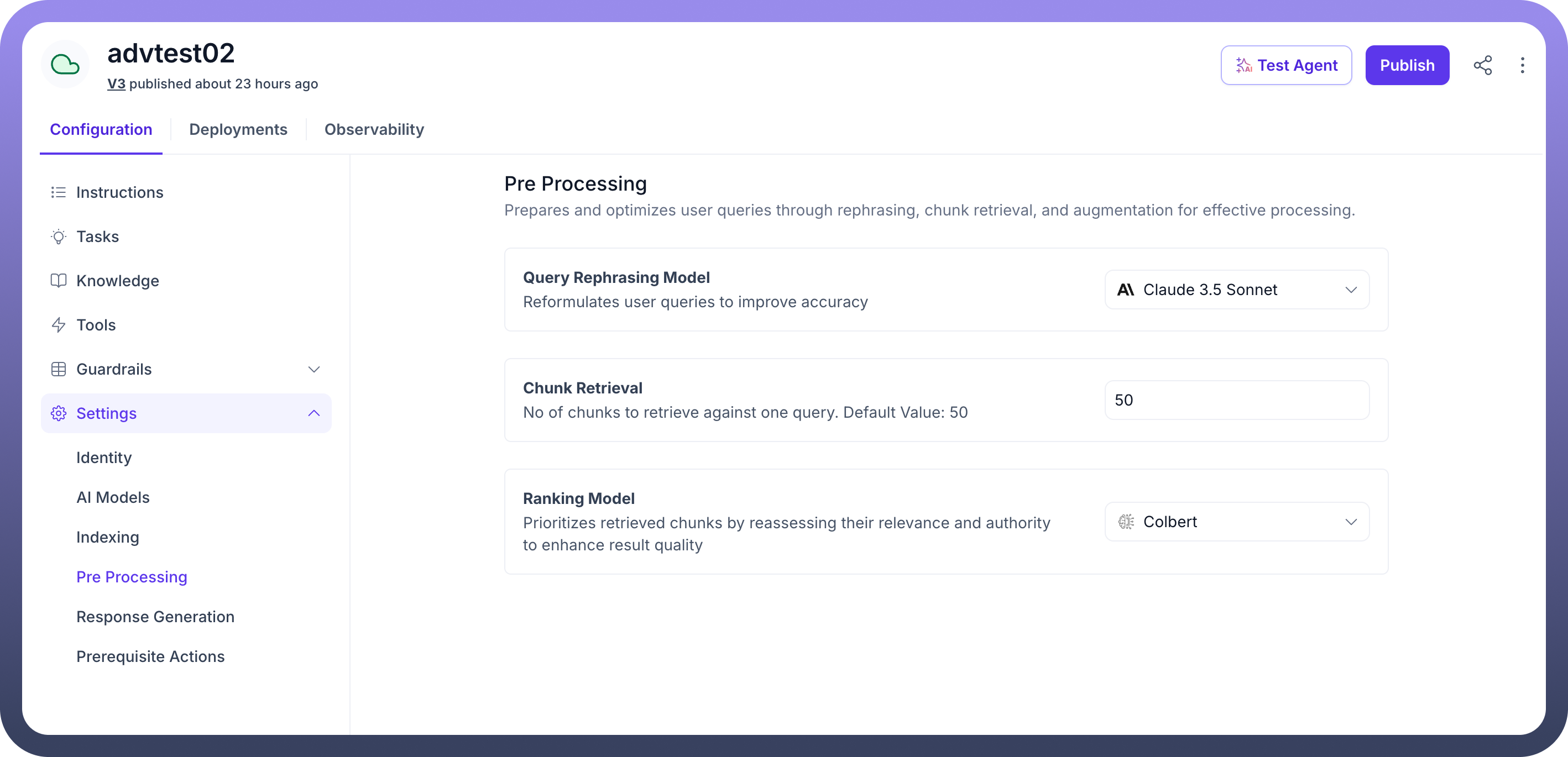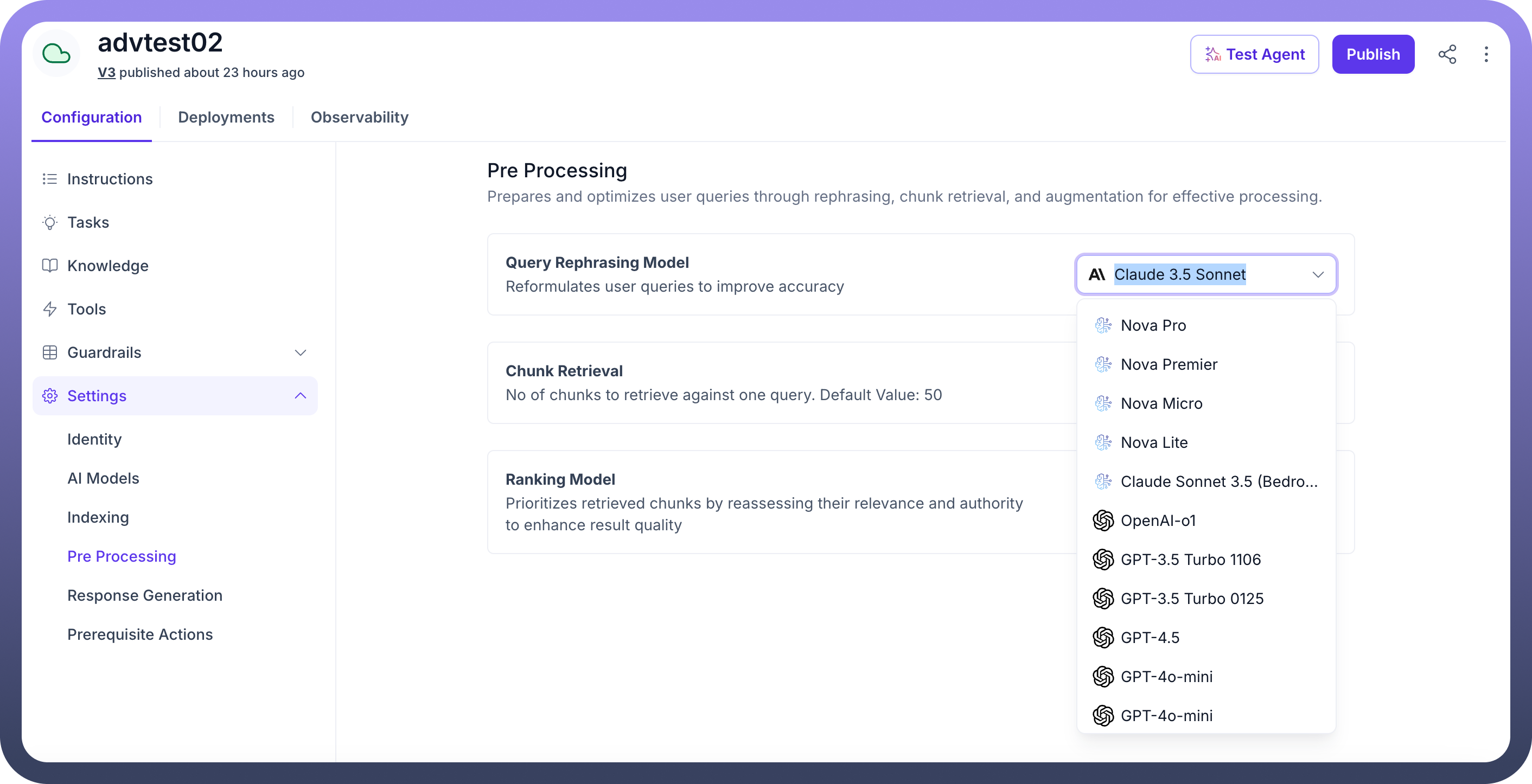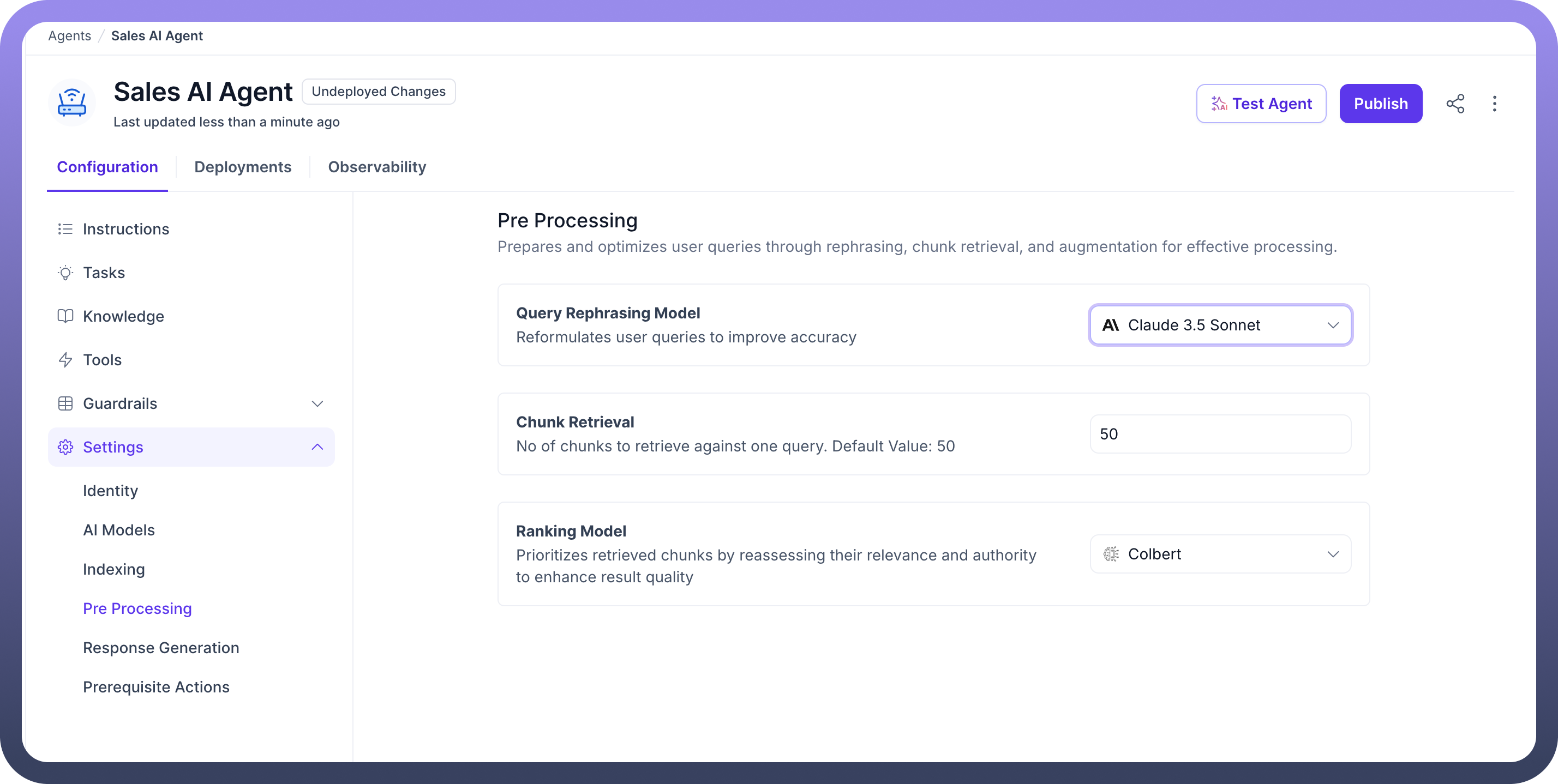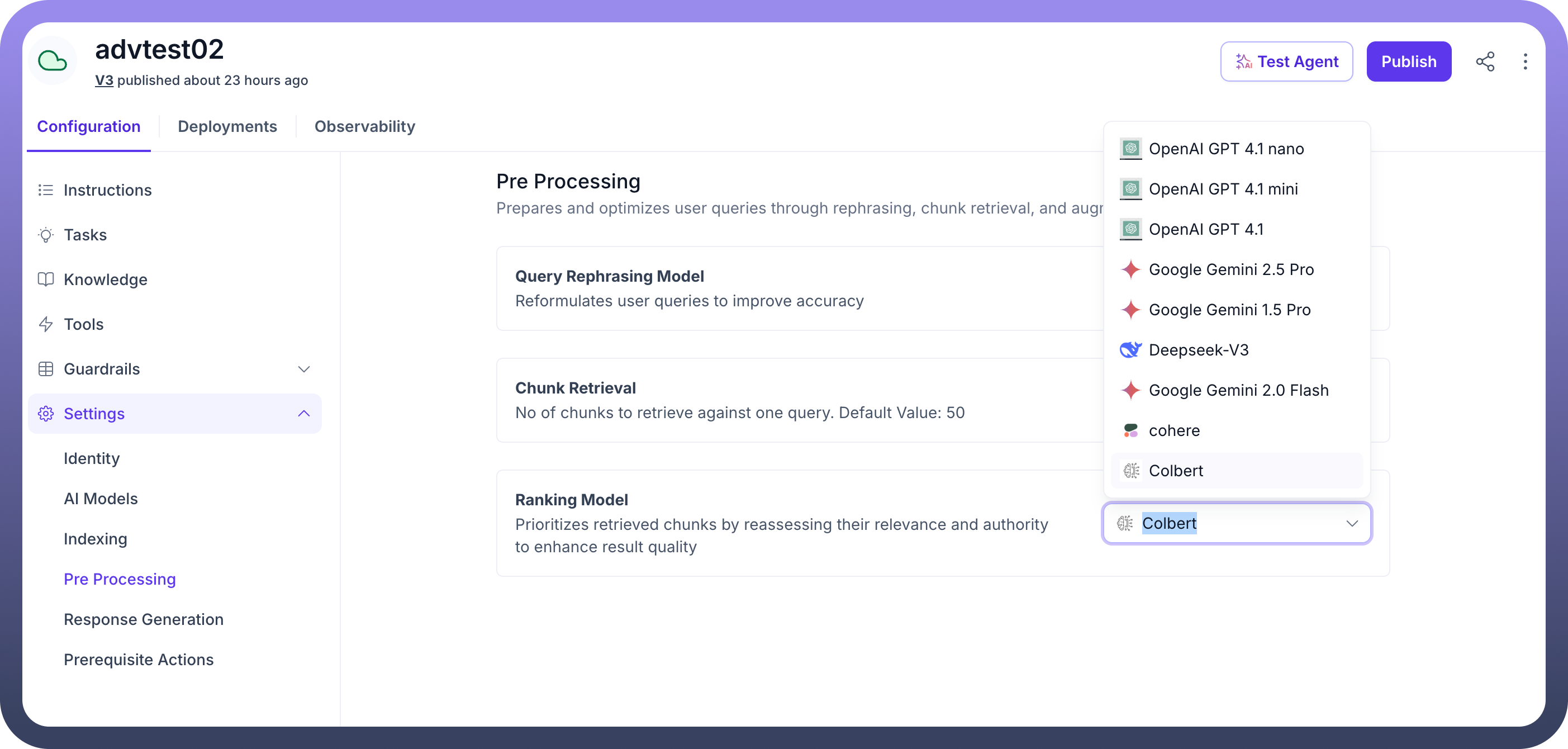Overview
The complete knowledge management process for an AI agent consists of 3 layers:
AI Agent Response Generation Workflow :
Knowledge Indexing
Document processing
Embedding generation
Vector storage
Query Processing & Retrieval - Query Rephrasing
Chunk Retrieval
Ranking/Reordering
Response Generation
Answer formation
Response delivery
The query processing and retrieval system represents the middle layer of the knowledge management process, positioned between knowledge indexing and final response generation
At the pre-processing stage, we define different parameters that manage how user queries are processed to retrieve and rank relevant information from the vector store from the pool of added knowledge sources.
Stages of Pre-Processing
Query Rephrasing The query rephrasing serves as the first line of optimization in the pre-processing pipeline. This component employs LLMs to transform user queries into more precise and relatable formats depending on the conversation context. You can define how you want user queries to be rephrased by customizing the rephraser prompt available in the "Prompts" section, and you can choose the query rephraser model from available options like Claude 3.5 Sonnet, GPT-4, and more.
How It Works:Analyzes the original user query
Applies contextual understanding to maintain intent
Reformulates the query for optimal information matching
Let’s understand this better with the help of an example.
Original Query: "What's our WFH policy?"
Rephrased Query: "What are the current company policies and guidelines regarding working from home?"
Chunk Retrieval The chunk retrieval is responsible for extracting relevant information segments from the agent's knowledge base based on vector similarity search. This process fetches relevant chunks from the vector store where the knowledge sources are indexed. You can define the number of chunks to be retrieved.
Let’s understand this better with the help of an example.
For a WFH policy query, the system retrieves:
Complete remote work policy documentation
Management approval protocols
Time tracking and accountability guidelines
Related HR procedures
Ranking Chunks The ranking system prioritizes and organizes retrieved information based on relevance scores and contextual importance along with the flexibility to chose a model of your choice.
Lets understand this better with the help of an example.
For a password reset query:
Content Type
Relevance Score
Priority
Password Reset Procedure
0.95
High
Account Security Guidelines
0.82
Medium
Password Requirements
0.78
Medium
General Account Information
0.45
Low
To configure the Pre-processing step in your AI Agents, follow these steps:
Choose a “
Rephrasing Model” to reformulate user queries for improved accuracy. This helps in optimizing how queries are understood and processed.



Next, specify how many chunks to retrieve for one query. The default value is set to 50, but you can adjust this based on the complexity and size of the data you're working with.


Increasing the number may enhance retrieval but may also impact performance.
Then, Select a “
Ranking Model” for the retrieved chunks by reassessing their relevance and authority. This step ensures that the most relevant chunks are prioritized in the search results.


These settings optimize user queries by improving query reformulation, chunk retrieval, and ranking, ensuring high-quality query processing in AI agents.
The final step in configuring the AI agent is Response Generation.